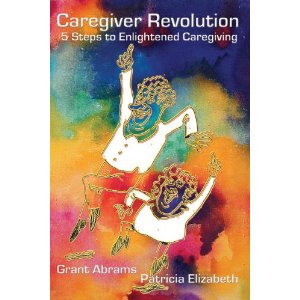A Death Plan
taken from The Natural Death Centre
About a third of us in the UK get around to making a Will, which specifies our wishes for what should happen after our death, as regards our funeral and our children and our possessions. A tiny percentage make an Advance Directive or Living Will (available with a Death Plan, and an Advance Funeral Wishes form from The Natural Death Centre for £7 per set; order securely online by credit card) stating how much medical intervention we want when dying. But hardly anyone makes a death plan, similar to a birth plan, saying what they would ideally like in terms of atmosphere and environment as they lie dying. Of course no one can be sure how they will die or whether such a plan in the event will be of any relevance, and they may change their minds when the time comes; but nevertheless, a death plan may help friends and relatives to know one’s orientation and wishes.
In the hope of encouraging readers to improve on the following list, or to send in their sample filled-in versions of this list, or to write a list of their own, here is a first attempt at a death plan. [Separate sheets can be used for longer responses, using the numbers below to refer your reponses back to. Underline or tick or cross out or amplify as relevant. This form can be photocopied.]
(1) If my condition is terminal I would like to be told the full details / plus implications of treatment and non-treatment / a summary / not to be told at all / other [specify].
(2) If possible, I would / would not like the doctor to tell me a guess as to how much time I might have left, between best and worst cases, and on average.
(3) I imagine I would / would not like every effort to be made to find alternative medicine and approaches / latest medical breakthroughs that might give me a miraculous last-minute remission.
(4) I have / have not made an Advance Directive, specifying how much high tech medical intervention I wish for when dying and whether or not I wish to be force fed [if yes, the location of this AD].
(5) I imagine that I will / will not choose to fast as death approaches.
(6) If possible, when I am dying I would like to be cared for at ……………………………… [location, whether hospital, hospice, at home, indoors, outdoors, etc].
(7) I would like to be surrounded by ……………………………… [flowers, nature, photos, mementoes, etc].
(8) My next of kin is [name, address, phone number].
(9) If I go into hospital / when I die, what I would like to happen to my pets is …………………………….. .
(10) I would / would not like for close relatives / friends / everyone to be told that I am terminally ill.
(11) Those friends or relatives who I would most like to be involved in my nursing care are ……………………………… .
(12) I would like ……………………………… to be able to sleep in the same room / bed as me.
(13) I may change my mind, but I imagine I would / would not like visitors when near the end. The ones I would particularly like to visit me include ……………………………… [give addresses and phone numbers if necessary].
(14) I would / would not like to be left as alone as possible when dying.
(15) I imagine that I would / would not like to discuss the fact that I am dying with these visitors, and would / would not like to make explicit the possibility that these are final goodbyes.
(16) My religion / spiritual practice / philosophy is mainly ……………………………… and therefore for my dying I would like ……………………………… .
(17) Depending on my medical condition and feelings at the time, the kind of ministrations I might appreciate when dying include:
(18) Music. My favourite pieces would be ………………………………. [state specific music or broad range].
(19) Live singing, chanting, hymns, psalms, particular prayers or texts, etc [as specific as desired].
(20) Physical contact [eg hand held].
(21) Massage.
(22) Aromatherapy [or other such approaches].
(23) The person(s) I would most like to be there at the moment of my death is / are ……………………………… .
(24) I would like to be as conscious / unconscious as possible as I die, and would like pain control treated accordingly. The drugs I imagine I might appreciate include ……………………………… [specific or class of drugs].
(25) For the moment of my death I would / would not like all life support machinery and monitors disconnected from my body.
Signed by:
Name
Signature
Date
This signing is witnessed by the two undersigned, neither of whom stand to benefit from the signatory’s Will:
Name of first witness
Signature
Witness’s occupation and address
Name of second witness
Signature
Witness’s occupation and address


